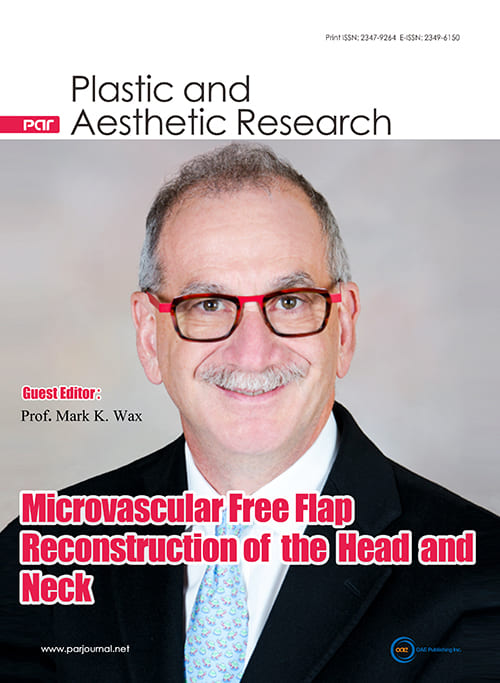
Topic: Microvascular Free Flap Reconstruction of the Head and Neck
A Special Issue of Plastic and Aesthetic Research
ISSN 2349-6150 (Online) 2347-9264 (Print)
Submission deadline: 30 Apr 2021
Guest Editor(s)
Special Issue Introduction
In this issue, we will discuss the increasing utilization of microvascular free tissue transfer for complex reconstructive issues in the head and neck. The role of free tissue transfer has expanded over the last decade. Whereas it was relegated to a few tertiary referral centers and highly specialized circumstances it has now become part of the armamentarium of most reconstructive surgeons. In the past, one described a reconstructive ladder with primary closure at the bottom and free tissue transfer at the Pinnacle. Free tissue transfer has now become one of the multiple tools available to reconstruct and rehabilitate our patients. Our decision as to which reconstructive modality to use in an individual patient is based on what technique will optimize patient rehabilitation and provide the best quality of life. Technological advances on many fronts have allowed for improved monitoring and salvage of failing flaps. The improvements in optics has enabled a new phase in microvascular reconstruction utilizing ergonomically appropriate camera and TV screens. The integration of 3D modeling with patient specific plates has allowed for the complete rehabilitation of maxillomandibular defects. Preoperative planning has markedly improved orodental rehabilitation with the ultimate reconstruction termed “Jaw in a day”. Management of patients with free tissue transfer has evolved from standard postoperative admission to the intensive care, to expedited protocols allowing floor monitoring and facilitation of early discharge. The gracilis free muscle flap has revolutionized the field of facial reanimation. Developments of multiple methods of neurotized and reanimating the muscle have improved outcomes tremendously. We hope to provide an update as to the improvements in functional rehabilitation brought on by free tissue transfer in the head and neck.
Keywords: Microvascular, free tissue transfer, head and neck reconstruction, functional rehabilitation
Submission Deadline
30 Apr 2021
Submission Information
For Author Instructions, please refer to https://www.oaepublish.com/par/author_instructions
For Online Submission, please login at https://oaemesas.com/login?JournalId=par&SpecialIssueId=550
Submission Deadline: 30 Apr 2021
Contacts: Lilian Zhang, Assistant Editor, Lilian@parjournal.net




